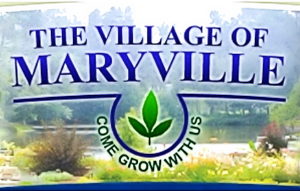By a unanimous vote of the Village Board on June 18, Maryville set in motion the process to create at least one Tax Increment Finance district in the village.
The creation of TIF districts would signal a shift for the town of about 7,487, which nearly doubled in population from 2000 to 2010, but many still consider a bedroom community. Mayor Larry Gulledge said the perception of Maryville as a bedroom community may be somewhat accurate, but that will change, to an extent.
“We don’t want to become overrun by businesses, but we want to be able to give the people the services they need without relying on property tax,” Gulledge said.
Gulledge likened Collinsville and the Glen Carbon/Edwardsville area as the dumbbells on a weight set, with Maryville the bar between them. There are currently eight TIF districts in those three communities, with more developed business environments than Maryville. Edwardsville has four TIF districts, Collinsville three and Glen Carbon one.
Maryville, which has built more homes per capita in recent years than any other community in Madison County, Gulledge said, is moving toward the creation of at least one TIF district to prepare for a future after the population boom.
“Sooner or later, things are going to slow down and we’ll have to become more sales tax oriented,” Gulledge said.
Discussions about a TIF district have been taking place for a couple of years, Gulledge said.
“We see the merits and we know the potential problems,” Gulledge said.
At the creation of a TIF district, all property in the district is assessed and assigned a baseline value. As the value of the property increases over the 23-year lifespan of the TIF, the property taxes paid above the baseline value go into the TIF fund to be used for future development or redevelopment within the district.
Because other taxing bodies, such as school districts, do not receive the additional property tax as the value of the properties increase, some object to the creation of TIF districts. It is required that the other taxing bodies in a community be invited to participate in the joint review board that provides input into the TIF redevelopment plan.
Even if the joint review board does not approve Maryville’s redevelopment plan, the community can continue with the plan if three-fifths of the Board of Trustees approves it. The public can provide input at public hearings that are required as part of the process.
Moran Economic Development, of Edwardsville, was hired to help Maryville with the process of creating the district(s). President Keith Moran said TIF is the only tool Maryville has to revitalize certain areas of town. Moran said the areas under consideration for inclusion in a district were very carefully selected.
“We want to be fair to our existing tax districts,” Moran said.
A potential site for a TIF district is the 120 acres near Illinois Route 159 and Interstate 55/70, Gulledge said. Although the area is part of a business district, mine subsidence has discouraged growth in the area, Moran said. Another consideration for a TIF district is the area along 159, where the majority of Maryville’s business are currently located.
A basic difference between a business district and a TIF district is that higher sales taxes are assessed in a business district, up to 1 percent. The area north of Illinois Route 162 and East of Illinois Route 159, which currently includes a Walgreen’s, is the other business district in Maryville.
Creation of the TIF districts is vital to the long-term health of the community, Moran said, noting that two-thirds of money spent on consumer items by Maryville residents leaves the village. With a median income estimated by the census bureau to be $76,580, higher than Edwardsville ($73,759), Glen Carbon ($66,296) and Collinsville ($47,229), the neighboring communities are benefitting from the financial flight of Maryville residents.
The process in still a month or two away from getting into full swing, Gulledge said. He thinks the change will be good for the village.
“I think in the next few years, we’ll see some growth,” Gulledge said. “We want commercial growth, but we want it to be responsible.”




